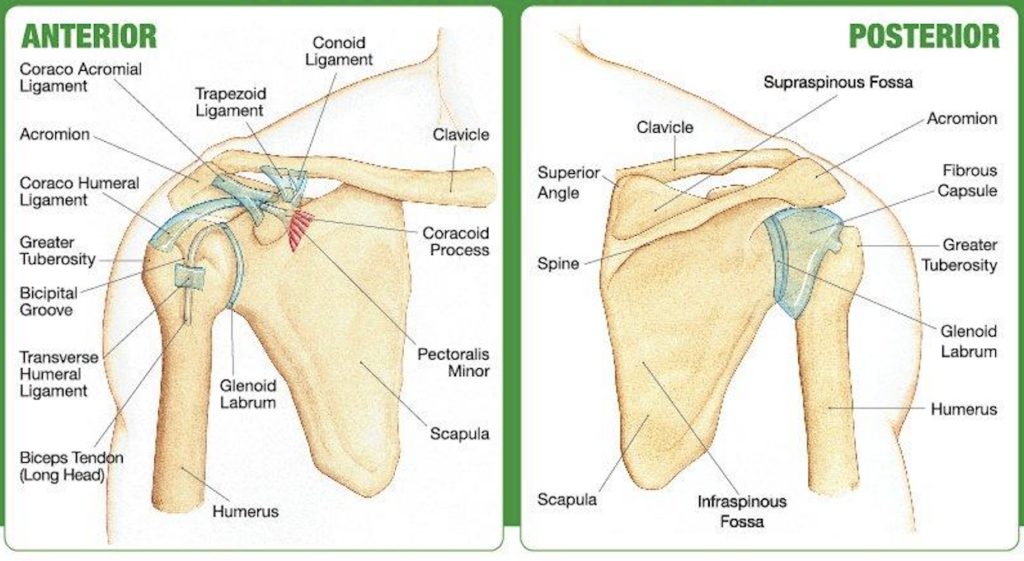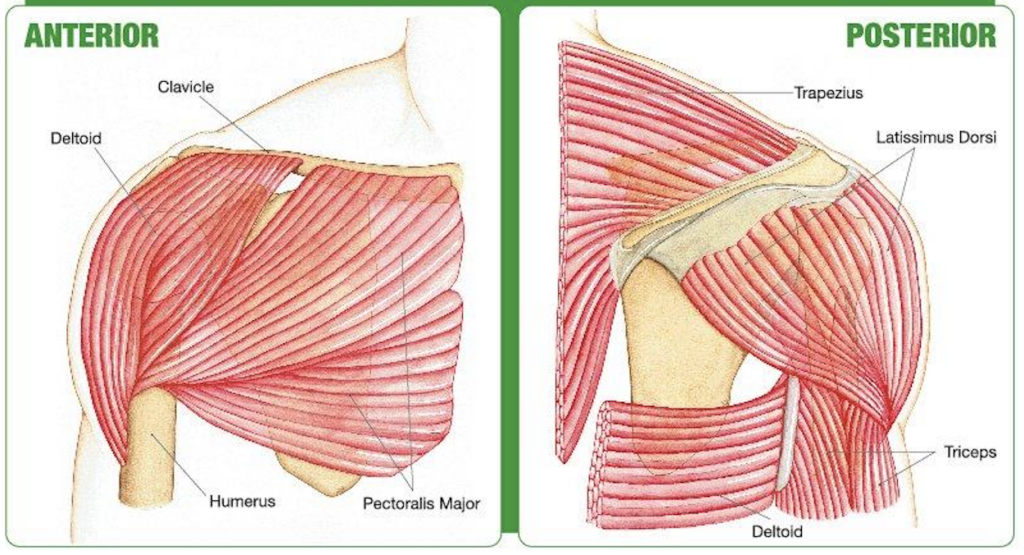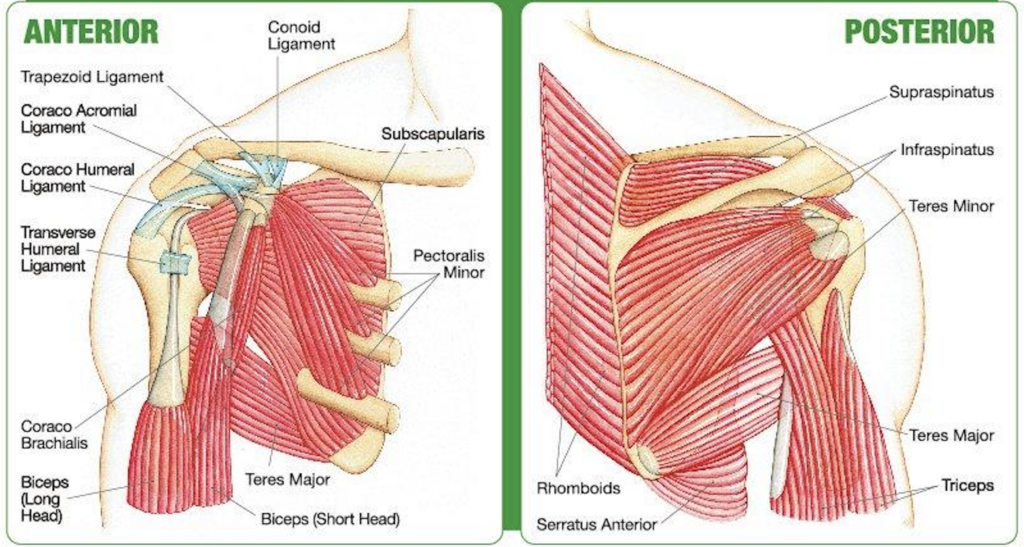Anatomy of the Shoulder

The shoulder is a highly mobile joint that enables a wide range of arm movements. Its complexity arises from the coordinated function of bones, joints, muscles, tendons, and other structures. Here’s an overview:
Bones:
Humerus: The upper arm bone.
Scapula: Also known as the shoulder blade.
Clavicle: Commonly referred to as the collarbone.
The head of the humerus fits into a rounded socket in the scapula called the glenoid. Surrounding this socket is a ring of cartilage known as the labrum, which forms a cup for the ball-like head of the humerus to fit into.

Superficial Shoulder Muscles:
Deltoid: The largest muscle just under the skin, responsible for lifting the arm in various positions.
Pectoralis Major: The breast muscle that assists in arm movements.

Deep Muscles and Tendons:
Serratus Anterior and Trapezius: Muscles connecting the shoulder blade to the trunk, aiding in shoulder movement.
Rotator Cuff: A group of smaller, deep muscles and tendons that keep the arm bone centered in the shoulder socket. They originate from the shoulder blade and insert on the head of the humerus, blending together to act like a broad elastic band around the head of the bone.

Other Structures:
- Joint Capsule: Surrounds the head of the humerus and the socket of the scapula.
- Bursae: Small fluid-filled sacs located underneath the deltoid muscle that cushion and protect the tendons of the rotator cuff.
The harmonious interaction of these components allows for the shoulder’s extensive range of motion, enabling activities such as reaching, lifting, and rotating the arm.